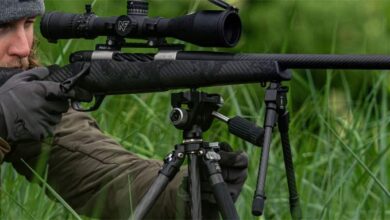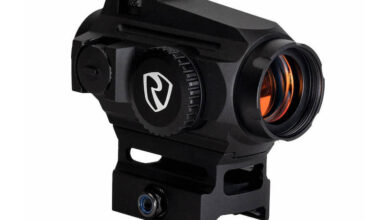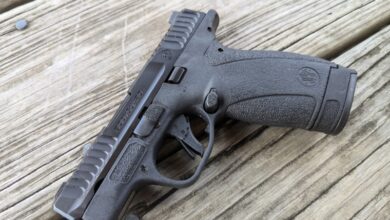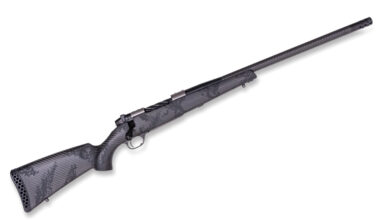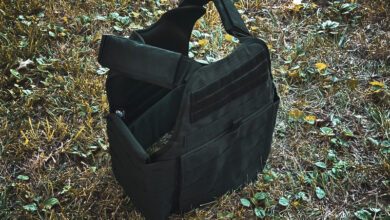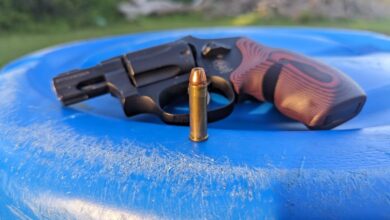The Optic Ready M9 variant
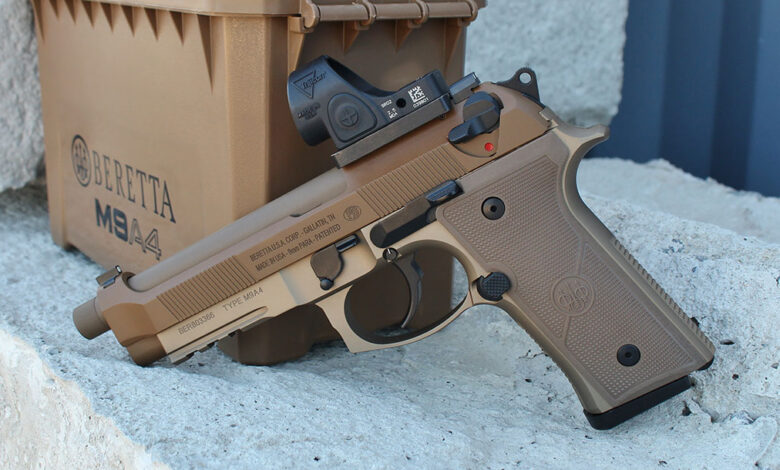
Love it or hate it, it’s hard to argue that the Beretta 92 isn’t one hell of a handgun. It would have to be to dethrone the M1911, a sidearm that we felt the military would never abandon. However, it was Beretta’s design that emerged triumphant during the military trials of the 1980s for a new service pistol, which was officially adopted in ’85. This paved the way for Beretta to eventually evolve the line and finally reach the modern iteration of the M9A4.
The Beretta M9A4
Reclassified as the M9, the 92 would remain the standard sidearm for U.S. forces until 2017. At that time, it took a backseat to the more modern Sig Sauer M17.
During this last trial, Beretta introduced the M9A3, a significant upgrade indeed. But, it neglected the spreading acceptance of red-dot optics. As the slide of these pistols is rounded, redesigning it in time just wasn’t feasible. However, if we fast forward a few short years, the M9A4 delivers on this front as well as many more.
Reborn Beauty
As the A4’s slide is the primary difference between it and the A3, let’s start there. Beretta machined the top of the slide using a two-slot system to accept one of five different mounting plates. These cover nearly all the different footprints available and fill any gap with a Picatinny option.
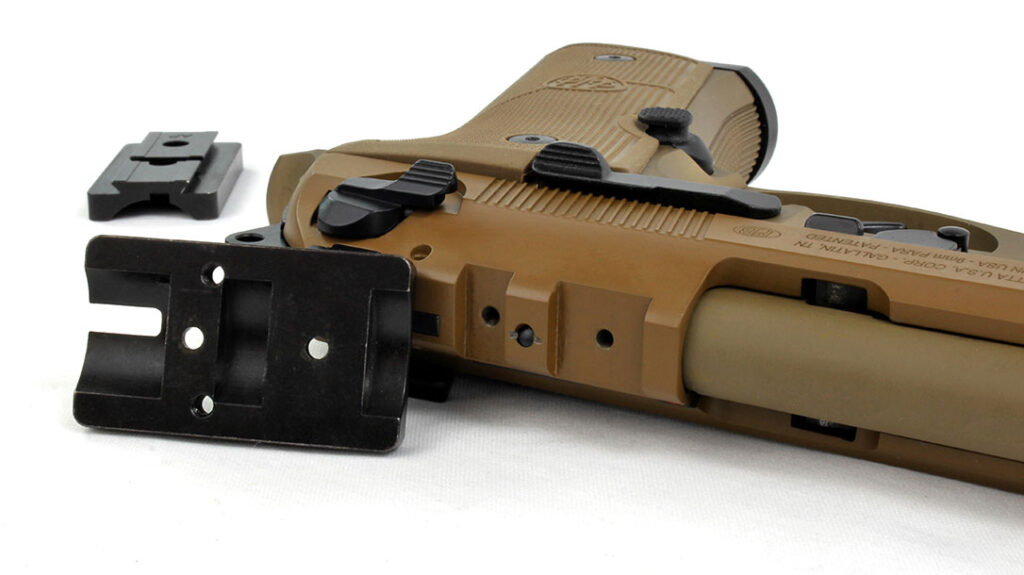
Not everybody is interested in running a dot, so Beretta stepped the sights up to the tritium variety. These are leaps and bounds beyond previous offerings, and I found them to be brilliant in bright daylight, pitch-black darkness, and any light condition in between.
Furthermore, they are dovetailed in, allowing for drift adjustability or even complete replacement if you prefer something else.
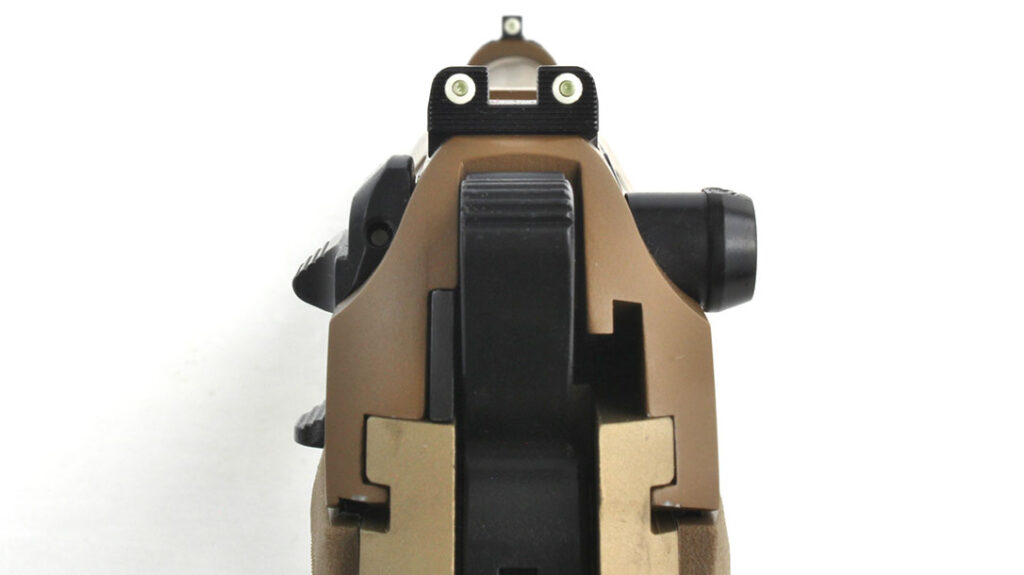
The Xtreme Trigger System
Just below the rear sight, you’ll find a familiar lever, but be forewarned; it doesn’t operate as you might believe. All A4s are configured as “G” models, which means that this lever serves as a decocker and springs back up after depression, eliminating the manual thumb safety.
In my opinion, this is the best option. Specifically, because it eliminates accidentally knocking it on or forgetting to pop it back up after dropping the hammer. The best thing that the 92 has going for it is that you can carry it like a double-action revolver and put rounds on target the moment you clear the holster.
That long trigger pull is all the “safety” an experienced shooter truly needs. Likewise, it eliminates at least one failure point that could leave you defenseless if stuck in the “on” position. This feature does not change it from its popular double/single-action configuration. Not to mention, it has been highly polished through the use of the Xtreme Trigger System.
The single action on my test model broke at 5 pounds, 5 ounces. Correspondingly, it reset within an eighth of an inch of forward travel. After decocking, I measured the double-action pull weight of 9 pounds, 6 ounces. I feel this is a healthy balance between security and usability.
Perfecting the Barrel of the M9A4
The barrel of the A4 retains the features we love while welcoming the M9 to the 21st Century. At first glance, you’ll notice that it is threaded to accept a sound suppressor or even a compensator more easily. Previously, the user would have to source an aftermarket replacement or recruit a gunsmith to prep the barrel for accessories.

Of course, if you already have an option that you love, it is backward compatible. This makes good sense, as the barrel system is what makes an M9 an M9. To that end, the A4 uses the same locking lug as legacy models, embodying the phrase, “If it ain’t broke, don’t fix it.”
Improvements
Beretta’s 92 is known for many things, but not all are favorable. Among them is the enormous grip that previously only accommodated the largest paws in the market. Keeping with what it introduced with the A3, the A4 frame is also built with the slimmer Vertec-style grip. As a result, it is far more manageable for the rest of us.
If you are a fan of the old-school fat grip, don’t worry. A wrap-around grip set is included to fill it out for you.
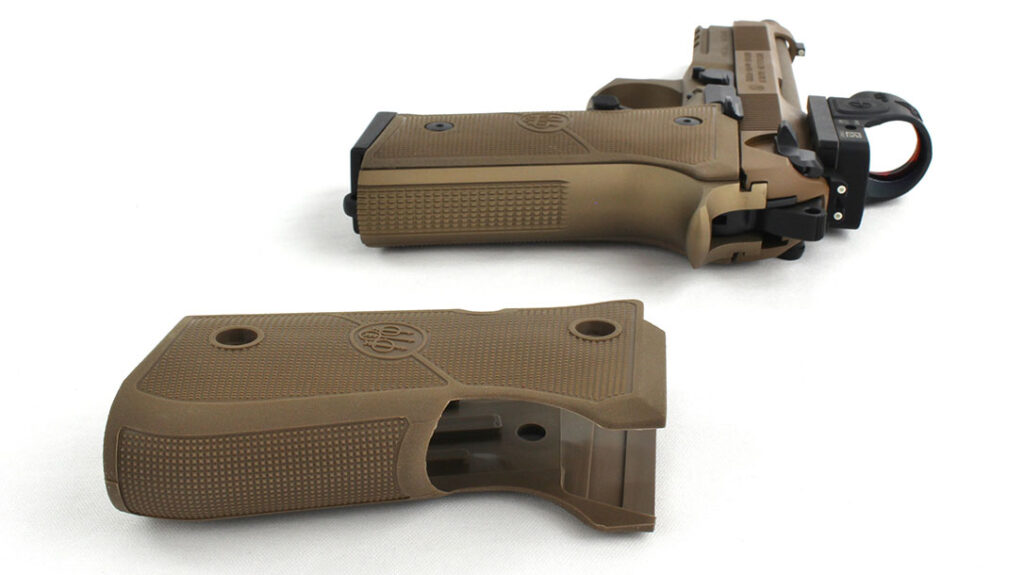
Other frame improvements include the three-slot Picatinny rail section cut into the dust cover. While these have been around for a bit, it’s nice to see that they didn’t go backward. Of course, that means that older 92 holsters aren’t compatible. But plenty of folks are making railed holsters for the newer-style M9s.
The improved grip profile is a game changer for the 92 in the recoil management department and doesn’t stop there. Controllability is further aided through course studding, which is cut into both the back and frontstrap. Likewise, finer texturing is applied to whichever set of stock panels you decide to use.
Moving down, the magazine well of the A4 is beveled for hasty reloads and accepts all 92 magazines to date. Three are included with a capacity choice of 15, 18 or 10.
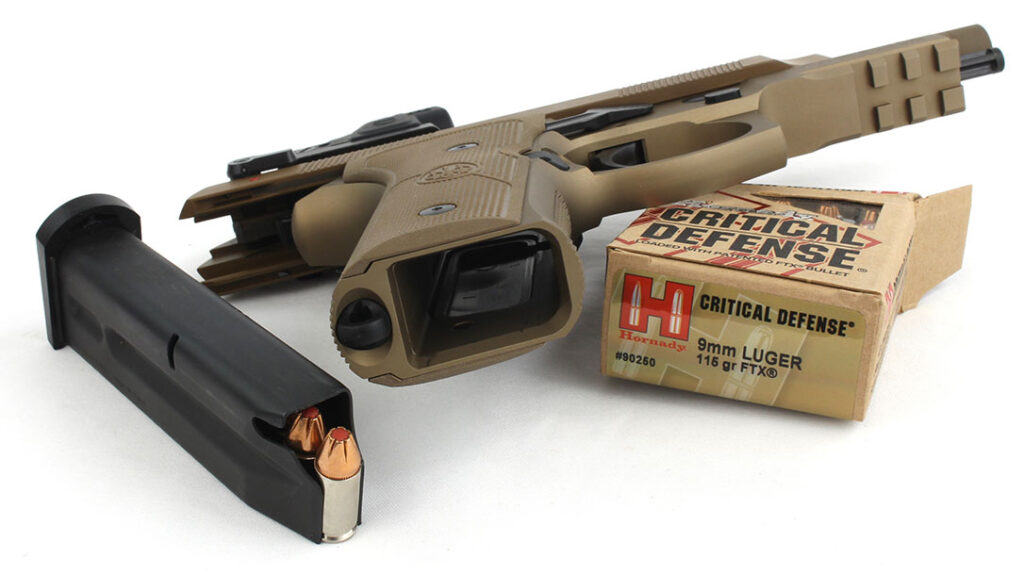
Taking Control of the M9A4
The controls of the M9A4 will be familiar to anybody who has ever handled this iconic platform. The magazine release is in the exact location on the frame as the original, except it has been enlarged and extended rearward to aid both tiny or gloved fingers.
Located above it is the slide stop that is still only made for right-thumb operation. Because the trigger bar would be in the way if Beretta tried to make it ambi, it’s hard to fault them for that.
They did, however, retain the ambi-decocker. This admittedly wouldn’t upset any southpaws if it were omitted, mainly because it isn’t accessed under stress. The same can be said about the takedown lever, which, as a lefty, I’ve never had trouble actuating.
Aside from the hammer, lanyard loop, and grip screws, these are the only exterior parts to bear a black hue. The rest of the gun is finished in an FDE coating that resists corrosion and the elements. Thus making it ideal for the rigors of combat.
Attaching an Optic
I prepared my sample by strapping a Trijicon SRO to the slide after ordering the appropriate plate from Beretta. Nothing more was needed for the installation other than a Torx driver, as the manufacturer provided all fasteners.
Honestly, it’s something that can be done at the range. However, being that it was 95 degrees that day, I savored the A/C while I could. After attaching the Trijicon, I noticed that the optic sat notably higher than the sights. So, using both at the same time just isn’t going to happen.
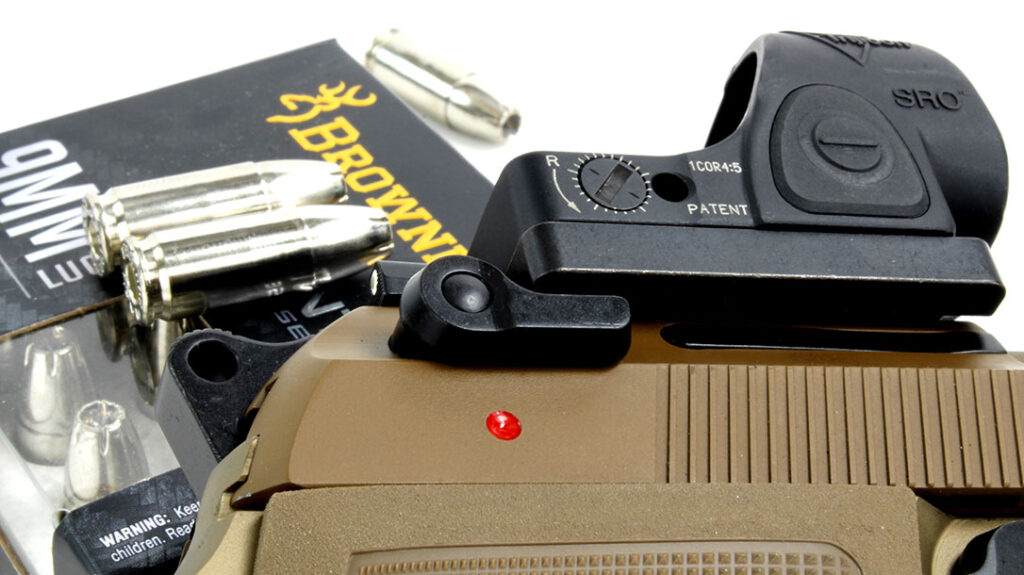
To that end, you might want to spend a few extra bucks to buy a dot that you can count on, and the SRO certainly fits into that category. Additionally, the large window helps immensely as the gun isn’t going to point the same as it would if you were using the iron sights.
Now, all I needed to do was round up a variety of ammo, charge my chronograph, and hit the road.
Running the M9A4
My range day was going to consist of bench-rested accuracy testing followed by some practical shooting maneuvers. Because this is a full-sized handgun, I pushed my test targets out to 25 yards, which the M9 family can undoubtedly do.
Aside from being silly accurate, my old 92F is the only pistol that I own that has never jammed. And not for lack of trying. I mean, this was the gun I learned how to reload on, and as such, a bevy of questionable fodder has been run through it. That open-top design serves it well, but nonetheless, I wanted to test things.
My ammo sample consisted purely of designs known for troublesome feeding and loaded with projectiles ranging from 115 to 147 grains. Honestly, since the guts of this gun haven’t been altered far from the original, I wasn’t expecting any issues. And I certainly wasn’t let down.
The gun ate everything I fed it and cycled flawlessly to slide lock after every magazine. That might have been my only concern. Specifically because adding an optic to a slide slows it down and introduces malfunctions in some cases.
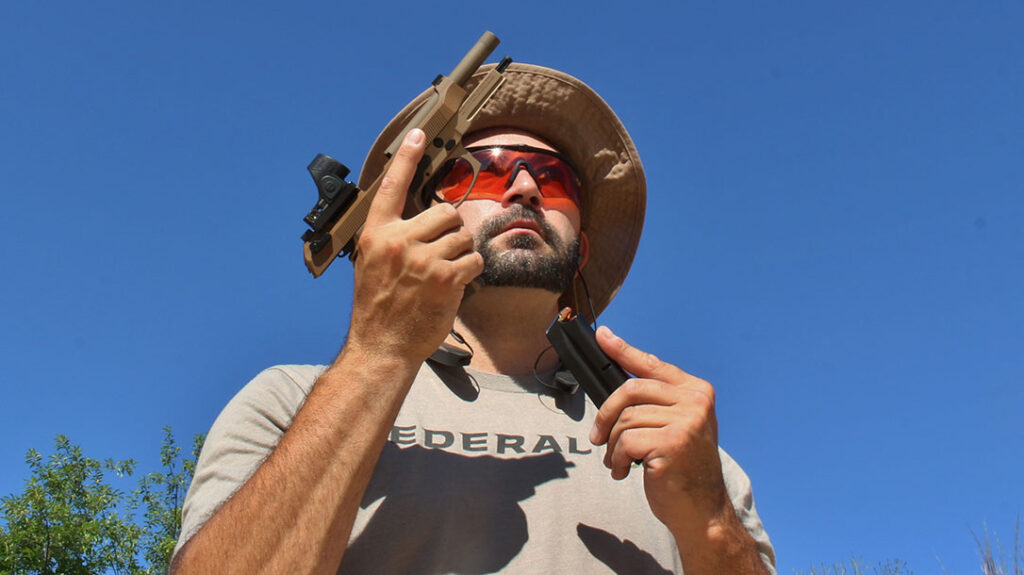
Group Therapy
The second legacy of the 92 held as well; this A4 was one straight shooter. Very few groups broke the 2-inch mark, and none reached 3 inches. This is astounding for a diet solely of defensive ammunition.
Dialed in and satisfied with the results, I moved on to banging away at a field of Caldwell AR-500 IPSC silhouettes. I enjoyed the balance that the aluminum frame imparts on the all-steel slide. Although heavy, it swings and stops as it if had brakes and recovers like you’re shooting powder-puff ammunition.
Double-taps rang out with split times as short as 0.18 seconds. Likewise, muscle memory attributed to instinctual reloads that had a bit of forgiveness now, thanks to the beveling. All in all, it was a great day on the range, and felt like I was catching up with an old friend.
Parting Shots
A piece of me feels bad about how the chips fell. Beretta certainly would have had a better chance of winning the contract if this variant of the pistol had been ready in time. However, being that it went to Sig, that leaves a whole lot more of these around for the civilian market.
The A4 makes a perfect gun for those looking to keep something bomb-proof in the nightstand or like the secure feeling that comes with carrying an all-metal gun. It’s also an ideal piece for shooters looking to run something in the carry optics division or even dip a toe into open by screwing on a compensator.
For me, I just enjoyed running a 92 again. This platform has a lot to do with who I am today. Whatever your reasons, the Beretta M9A4 will deliver, and now shooters have more control than ever in making it their own.
For more information, visit Beretta.com.
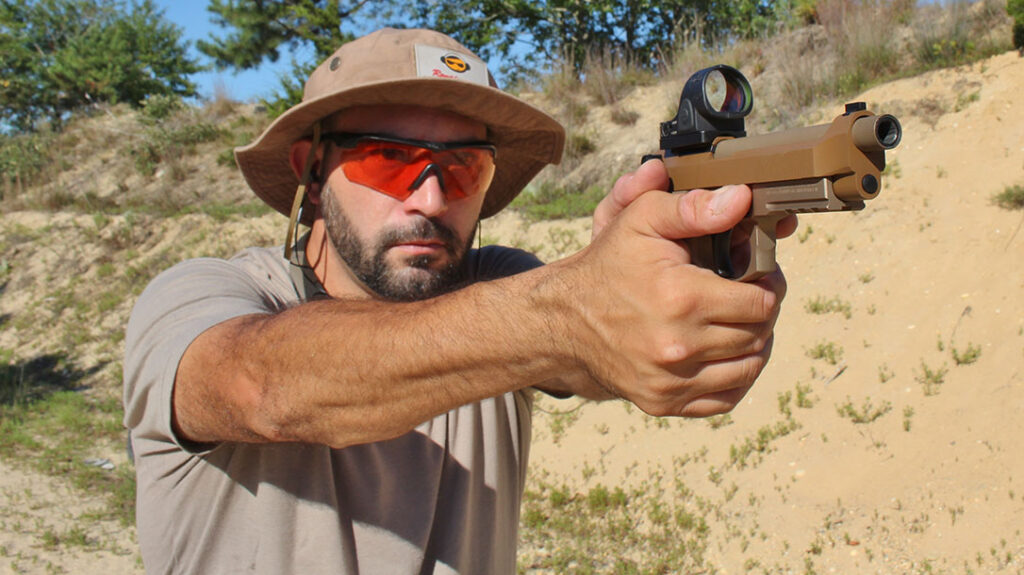
Beretta M9A4 Specs
| Caliber | 9mm |
| Barrel | 5.1 inches |
| Overall Length | 8.7 inches |
| Weight | 33.4 (empty) |
| Grips | Vertec-style, thin |
| Sights | Tritium night sights |
| Action | DA/SA |
| Finish | FDE |
| Capacity | 10/15 or 18+1 |
| MSRP | $1,129.00 |
Performance
| LOAD | VELOCITY | ACCURACY |
| Browning 147 JHP X-Point Defense | 912 | 2.11 |
| Hornady 115 FTX Critical Defense | 1,117 | 2.05 |
| Remington 124 JHP Black Belt | 1,107 | 1.52 |
Bullet weight measured in grains, velocity in feet per second (fps) by chronograph and accuracy in inches for best five-shot groups at 25 yards.
This article was originally published in the Combat Handguns January/February 2023 issue. Subscription is available in print and digital editions at OutdoorGroupStore.com. Or call 1-800-284-5668, or email [email protected].
Didn’t find what you were looking for?
Read the full article here





